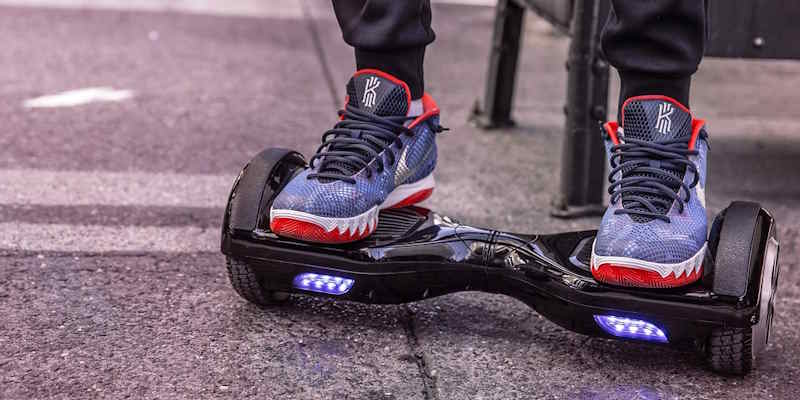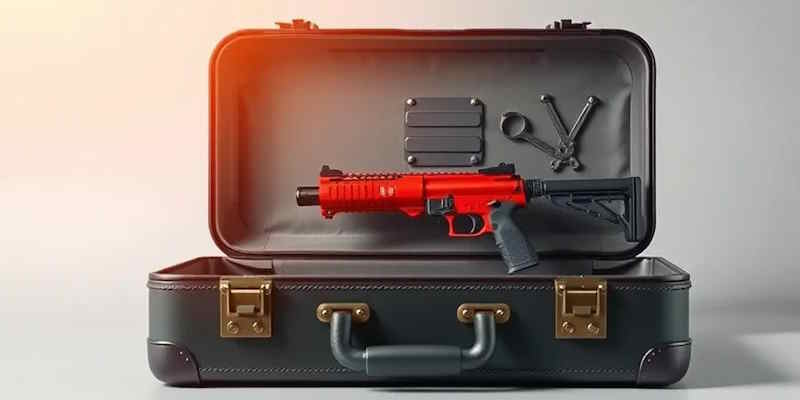Imagine, after months of planning your dream cruise, you’re at the cruise terminal, ready to board. But the wind is knocked out of your sails when security pulls you aside. You hear the dreaded words: “Sorry, these items are banned on cruise ships,” as the officer points to your coffee maker and bottle of rum. You protest—those items were acceptable in your checked luggage on the flight.
Did you know that many items that are OK on a plane are strictly forbidden on a cruise ship? Electrical gadgets, liquor, perishable goods, and even your kid’s pool inflatable—none of them are making it on board. To avoid this vacation nightmare, know what’s banned before you pack.
Cruise lines have strict policies—stricter than airlines—about what you can bring on board. To ensure your vacation sets sail smoothly, I’ve compiled a list of more than 40 items you should never bring on a cruise ship.
Consequences of Bringing Banned Items On Board
Getting caught with cruise ship contraband at the terminal isn’t just embarrassing—it can have dire consequences. For a start, the items will be seized, never to be seen again. Depending on the contraband, you could end up in the dock—not at the cruise terminal, but in front of a judge.
After researching several cruise industry websites and scouring forums, I’ve discovered that the consequences for banned items are the following:
- Confiscation: Security confiscates the prohibited items and holds them until the end of the cruise or keeps them for good.
- Delays: Your boarding process is delayed, and you must wait while everyone else heads off to enjoy the ship.
- Warnings or fines: You may get a formal warning or a costly fine.
- Denial of Boarding: The cruise line may deny boarding altogether for serious infractions. So, get ready to wave goodbye to the cruise ship and work out how to get home.
- Legal Action: In severe cases, like bringing illegal drugs or unregistered firearms, you could face arrest and prosecution. Remember, you’re subject to the laws of the ship’s home country and the countries you visit.
So, when packing, think twice about the temptation to sneak on board an electric kettle, recreational marijuana, a drone for aerial shots, and your favorite homemade jelly.
Remember, security checks all passengers returning from shore excursions. And getting stranded on a Caribbean island as the cruise ship departs into the sunset wasn’t part of your vacation plans. Many violations breach the cruise line’s contract and could result in being “disembarked at your own expense.”
45 Items You Cannot Bring on a Cruise Ship—Ever
Do you want to enjoy a stress-free vacation at sea? If so, read on to find out what to leave behind rather than risk your entire trip over a simple packing mistake.
Hard liquor and spirits

Are you planning on sneaking on your favorite whiskey to enjoy on the cruise? After all, cruise drinks prices are exorbitant. Think again. Bringing hard liquor, spirits, a bottle of wine, and beer for onboard consumption is a big no-no on some cruise lines. You may bring alcoholic beverages you bought on shore excursions, but the crew will keep them safe until your final port of call.
Check your cruise line’s policy about bringing wine and beer onboard. For example, Disney Cruise Line lets passengers bring two bottles of wine on board at every port of call. However, you may still have to pay a corkage fee to drink the wine.
Cruise lines say the ban on bringing on alcohol is about safety. However, we all know it’s about profit. It’s estimated that cruise lines make half a million dollars per week just on alcoholic beverages. Reports indicate that Carnival Cruise Line makes half a billion dollars annually on alcohol sales.
Electrical items

Regarding safety, cruise lines take fire risks seriously. Therefore, they ban many electrical appliances from being brought on board.
Here’s a list of the most commonly confiscated items at cruise security:
- Coffee machines and electric kettles: Brewing a fresh cup in your cabin might sound nice, but their heating elements pose a fire hazard.
- Steamers and irons: Want to look smart and wrinkle-free for a formal evening? If so, forget about bringing a steamer or iron, as they are safety risks.
- Fans: If you want to stay cool in your cruise cabin, ask your cabin steward for a fan rather than bringing your own electrical fans.
- Hot plates, heating pads, water heaters, heating blankets: You’ve guessed it! Exposed heating elements can cause accidental fires.
- Hair dryers: Check with your cruise line about taking personal hairdryers onboard. I discovered that some cruise lines accept them up to 700 watts. However, others remove them from the luggage.
Generally, any household appliance with a heating element will be removed from your luggage before boarding.
Extension cords and multi-plug outlets

Some cruise lines, like Royal Caribbean, ban extension cords, power strips, and multi-plug outlets due to the risk of overloading electrical systems and causing a fire. However, Carnival Cruise Line allows extension cords as long as they don’t have surge protectors, which can interfere with the ship’s systems.
That said, it’s always wise to check with your cruise line beforehand. Even on Carnival, security staff can determine if an extension cord “poses a hazard,” and if so, it will be removed and returned to you on debarkation morning. If you need extra sockets, ask your cabin attendant for a cruise-approved power strip, which might be allowed depending on the cruise line’s policy.
Candles and incense

It’s easy to understand why cruise lines are wary of naked flames and smoldering sticks in a confined space on a ship. They are a severe fire risk. Therefore, items like candles, incense, and matches are strictly prohibited on a cruise ship.
If you want to enjoy a peaceful ambiance in your cabin or cabin balcony, bring some flameless LED candles instead. You can create a romantic atmosphere without risking setting the cabin on fire.
Perishable food

Security guards will remove perishable food items from your luggage before boarding the ship. Contraband food items include fresh fruits, vegetables, meats, and homemade dishes. Even though you have a mini-bar fridge in your room, it cannot store fresh food safely for more than a day or two.
It’s also vital to realize that each country has strict regulations regarding imported food. There is also the risk of foodborne illness spreading between passengers.
But given the extensive food options onboard—which you have paid for—sneaking meat or grandma’s finest compote shouldn’t be a priority. Instead, enjoy exploring the ship’s culinary delights—from all-you-can breakfasts to buffet meals and specialty dining. Cruise ships offer a wide variety of delicious food to enjoy at sea.
But don’t think sneaking food on board—live or dead—is a good idea. Social media reports show a couple who fished off their balcony on a Carnival cruise ship. They filmed themselves landing the fish, which resulted in them being banned for life.
Large coolers

Forget about bringing a large cooler onboard, as they are prohibited due to space constraints and food safety concerns. Cruise ship lines generally allow small, personalized coolers no larger than a foot (30 cm) long. However, don’t expect to be allowed to bring a chunky cooler to keep in your cabin.
The best tip I found in cruise forums was to ask your cabin steward to empty the mini-fridge. That way, you have plenty of room to chill beverages or leftover food items from the buffet. Another great tip is asking your steward to replenish the ice bucket daily.
Prohibited weapons and self-defense items

You may be worried about a dodgy port on a Caribbean cruise itinerary, but you cannot bring onboard self-defense weapons. Generally, all knives and sharp objects are confiscated before boarding because they’re deemed offensive weapons. The only exceptions are Alaskan Ulu knives “bought legally during ports of call.”
Here’s the lowdown on what cruise lines won’t allow on board:
- Pocket knives: While handy, small pocket knives are banned due to the potential for harm. Some cruise lines may allow knives with blades under a certain length, but it’s best to leave them behind.
- Handcuffs or restraining devices: Unless you’re a security professional authorized by the cruise line, any type of restraining device, including handcuffs, is prohibited. These items are considered security risks.
- Pepper spray or mace: Don’t expect to be let onboard with pepper spray. Although it is a typical personal protection item, cruise ships ban it because it can easily harm passengers and crew.
- Martial arts weapons and blunt weapons: Nunchucks, batons, and other martial arts weapons are prohibited. Blunt objects that could be used as weapons, such as baseball bats or heavy sticks, are also prohibited.
- Meat cleaver: I’m unsure why someone would have a meat cleaver in their luggage, but Royal Caribbean lists it as prohibited. By the way, it’s listed alongside crossbows, sabers, ice picks, hammers, and swords.
These restrictions help maintain a secure environment for everyone on board, ensuring your cruise is as safe as enjoyable.
Liquids like bleach, gasoline, lighter fluid

Hazardous liquids are strictly forbidden on cruise ships. Substances like bleach, gasoline, and lighter fluids pose significant risks as hazardous or flammable liquids. Bringing them on board could lead to dangerous situations. So, it’s best to leave these items at home and rely on the ship’s expert cleaning staff to ensure top-notch safety procedures.
Matches

It’s best to check your cruise line policy for bringing matches onboard. Some cruise companies allow small, standard matches for lighting cigarettes in designated smoking areas. However, others have strict rules against them due to fire safety concerns. Therefore, always check your cruise line’s specific policy before packing a box of matches.
CBD products

Even though CBD products are more common and legal in some states, they are generally not allowed on cruise ships. Therefore, don’t pack CBD oils, edibles, creams, and other forms, regardless of their THC content, in your luggage. Cruise lines adhere to strict federal and international regulations, which prohibit any form of cannabis derivatives, including CBD.
From what I’ve read in news reports and online forums, consequences for using CBD products—even for medicinal purposes—range from fines to evictions and legal problems with local authorities.
It goes without saying that illegal designer drugs are a big no-no on board cruise ships. So, carefully consider the wisdom of trying to sneak some spliffs onboard after visiting a Caribbean port.
Self-balancing scooters (hoverboards)

Don’t count on your hoverboard getting you around the cruise ship faster. Self-balancing scooters are confiscated from luggage before boarding. Cruise Line’s websites list a range of factors, including safety hazards, accidents, and fire risks from lithium-ion batteries.
However, mobility scooters are typically permitted on cruise ships. If you require a mobility scooter, contact your cruise line in advance about your mobility needs onboard.
Restricted sports and recreational equipment

Cruising is all about enjoying various sporting activities in exotic destinations. You may want to enjoy golfing in tropical Caribbean islands, scuba diving in the Cayman Islands, or catching big-game fish in the Bahamas. But you must remember that specific recreational equipment won’t make it past security at the cruise terminal.
Here’s what I’ve discovered about sports equipment you can and cannot bring on board on a cruise ship:
- Fishing gear: Cruise ships typically don’t allow personal fishing gear on board due to space constraints and safety concerns. However, most fishing excursions provide all the necessary gear.
- Surfboards: You may check in a surfboard on your flight, but you won’t get it on your cruise. Surfboards are large and cumbersome to store on a cruise ship. So, if you plan on riding the waves in St Maarten, Tortola, or Aruba, opt for hiring a board at the beach.
- Scuba diving gear: Scuba tanks and other large diving equipment are generally not allowed due to their size and the risks associated with compressed gas. Some cruise lines may allow you to bring smaller personal items like masks and snorkels but check beforehand.
- Bicycles: Bringing your own bike might seem a convenient way to explore port cities, but don’t expect your bicycles to be allowed on board. Don’t risk cruise security confiscating your bike—instead, hire a bike in port destinations.
- Skateboards and rollerblades: While fun, these items pose a safety hazard in a cruise ship’s confined and crowded spaces. Also included in the banned list is footwear with wheels.
- Golf clubs: Unless you’re planning a golf-themed cruise, leaving your clubs at home is best. Many Caribbean itineraries include golf destinations, but if you’re only planning on one round, it’s more cost-effective to hire clubs.
Drones

Some cruise lines—Royal Caribbean and Carnival Cruise Line—allow drones on their ships. However, you must use them only on land and outside port areas. Therefore, consult your cruise line policy beforehand if you plan to take aerial footage with a drone.
BB guns, air guns, and toy weapons

Don’t even consider thinking that a gun-like object is going to make it past cruise line security. Items that can be mistaken for harmful or otherwise weapons are not allowed on board. Therefore, leave any weapon-like object at home for your peace of mind when boarding.
But what about bringing water guns and similar fun items? Here, you are up to the discretion of the security officer. Some cruise forums, such as Cruise Critic, say water pistols can be brought on board, but you cannot use them onboard. So, leaving toy swords, water guns, and similar items at home is best to avoid embarrassment later.
Pool toys and large inflatables

Surprisingly, cruise lines that are all about fun in the water don’t let you take pool toys and huge inflatables on board. It’s good to remember that onboard pools are pretty small, and large inflatables can take up a lot of space. Apart from water wings for the kiddies, stick to the pool toys cruise lines provide.
Related articles:

